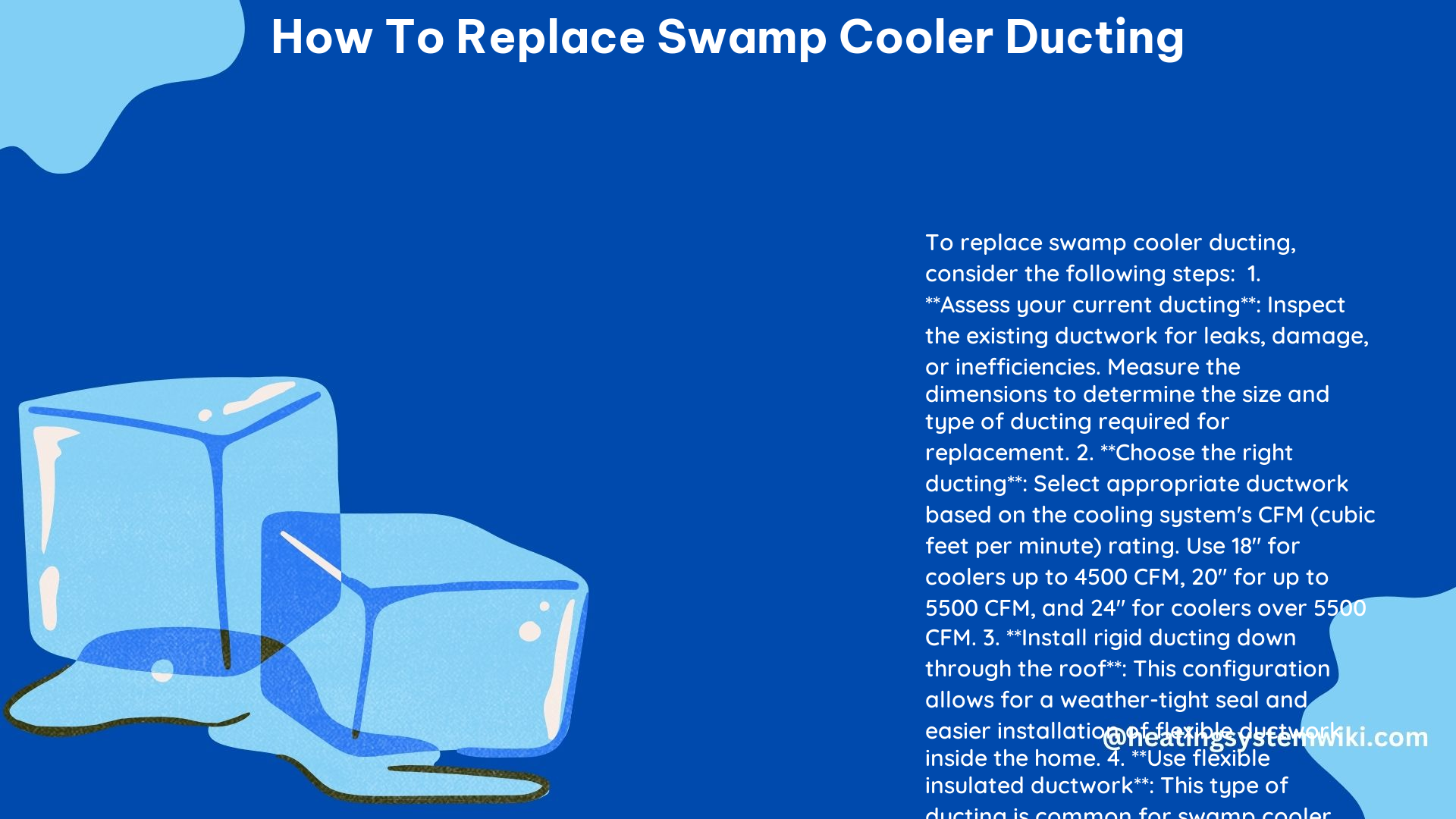Replacing the ducting of a swamp cooler is a crucial task that can significantly impact the efficiency and performance of your cooling system. This comprehensive guide will walk you through the step-by-step process of replacing swamp cooler ducting, providing you with the technical specifications and expert insights to ensure a successful and long-lasting installation.
Removing the Old Ducting
Before you can install the new ducting, you’ll need to carefully remove the existing one. This process may involve unscrewing or unfastening the ducting from the cooler and the ceiling or wall. It’s essential to wear protective gear, such as gloves and safety glasses, to safeguard yourself from sharp edges or dust.
When removing the old ducting, pay close attention to the attachment points and any potential obstructions that may hinder the removal process. Carefully document the existing setup, including the size, shape, and routing of the ducting, to ensure a seamless transition to the new system.
Measuring the Space

Accurate measurements are crucial when replacing swamp cooler ducting. Measure the space where the new ducting will be installed, taking into account the available clearance between ceiling or attic trusses, walls, and any other obstacles. This information will help you determine the appropriate size and length of the new ducting.
The most common swamp cooler ductwork sizes are 18×18 inches or 20×20 inches, which are designed to fit between standard ceiling or attic trusses. However, it’s essential to verify the specific dimensions of your installation space to ensure a proper fit.
Choosing the Type of Ducting
When it comes to swamp cooler ducting, there are two main types to consider: rigid and flexible.
Rigid Ducting
Rigid ducting is typically made of metal or plastic and is known for its durability and stability. This type of ducting is well-suited for installations where the ductwork needs to maintain its shape and withstand the pressure of the airflow. Rigid ducting is often preferred in applications where the ductwork is exposed or easily accessible.
Flexible Ducting
Flexible ducting, on the other hand, is made of insulated material and is designed to be more adaptable to tight spaces and irregular layouts. This type of ducting is easier to install and can navigate around obstacles more easily. Flexible ducting is available in 18-inch, 20-inch, and 24-inch diameters, and the size should be selected based on the cubic feet per minute (CFM) rating of your swamp cooler.
As a general guideline, use 18-inch flexible ducting for coolers with a CFM rating of 4,500 or less, 20-inch ducting for coolers up to 5,500 CFM, and 24-inch ducting for coolers over 5,500 CFM.
Installing the New Ducting
Once you have the appropriate ducting selected, it’s time to install the new system. Follow the manufacturer’s instructions carefully, as the specific installation process may vary depending on the type of ducting and the configuration of your swamp cooler.
Typically, the installation process involves attaching the ducting to the cooler and securing it to the ceiling or wall using screws or clamps. It’s crucial to ensure a tight and secure connection at all attachment points to prevent air leaks.
To further enhance the efficiency and performance of the new ducting, consider sealing any gaps or seams with duct tape or mastic. This step helps to minimize air leaks and maintain the desired airflow throughout the system.
Insulating the Ducting
Insulating the new ducting can significantly improve the energy efficiency of your swamp cooler by reducing heat transfer and minimizing energy loss. Common insulation materials used for swamp cooler ductwork include fiberglass and foam.
When insulating the ducting, pay close attention to the R-value (thermal resistance) of the insulation material. Higher R-values indicate better insulating properties, which can translate to greater energy savings and improved cooling performance.
Testing the Ducting
After completing the installation of the new ducting, it’s essential to test the system to ensure it’s functioning correctly. Turn on the swamp cooler and carefully inspect the ductwork for any air leaks or gaps.
One effective method for detecting air leaks is to use a smoke pencil or incense stick. Slowly move the smoke source along the length of the ducting, observing any areas where the smoke is drawn in or escapes, indicating the presence of air leaks. Promptly address any identified issues to maintain the optimal performance of your swamp cooler.
By following this comprehensive guide and adhering to the technical specifications, you can successfully replace the ducting of your swamp cooler, ensuring efficient cooling, energy savings, and long-term reliability.
